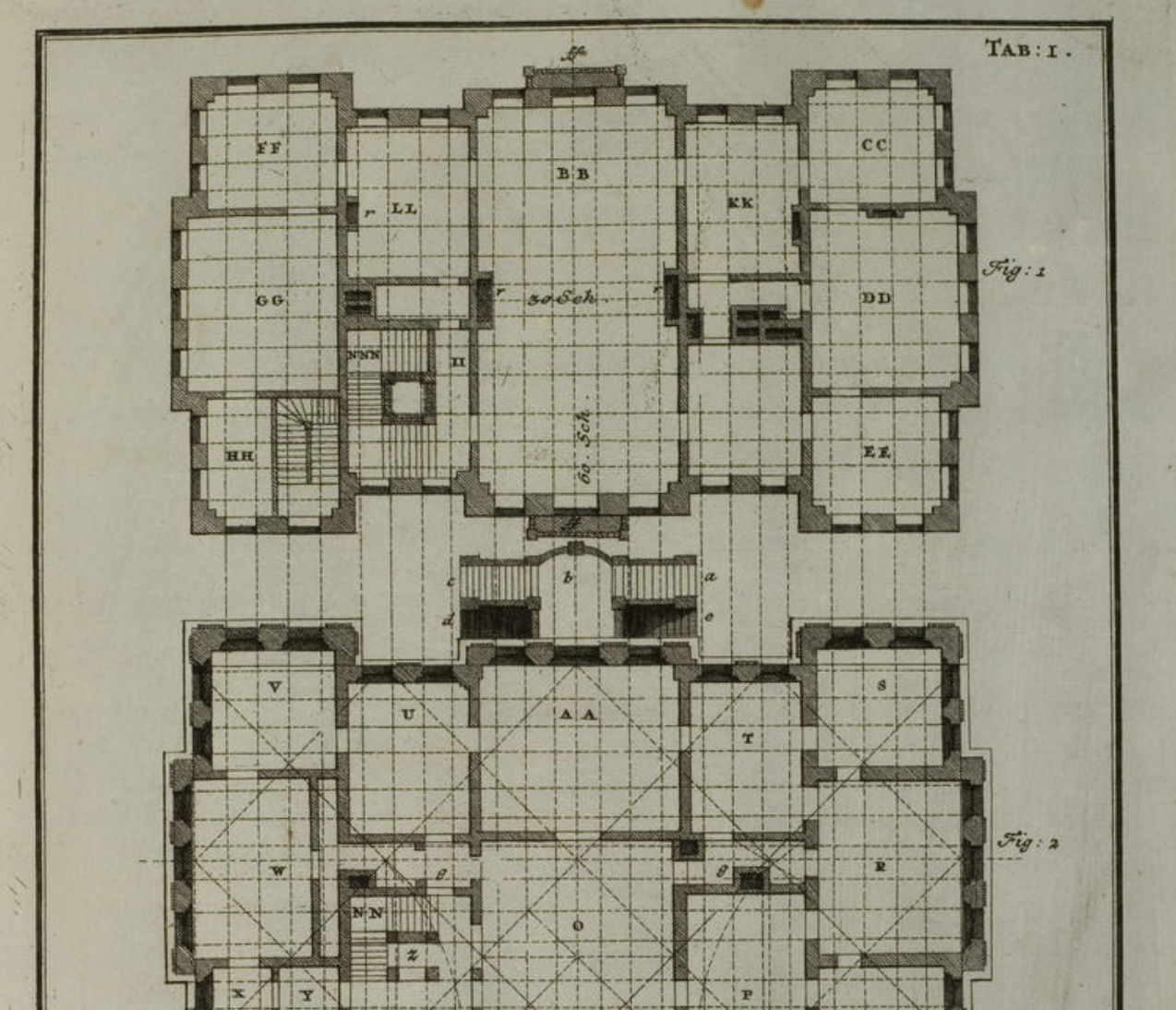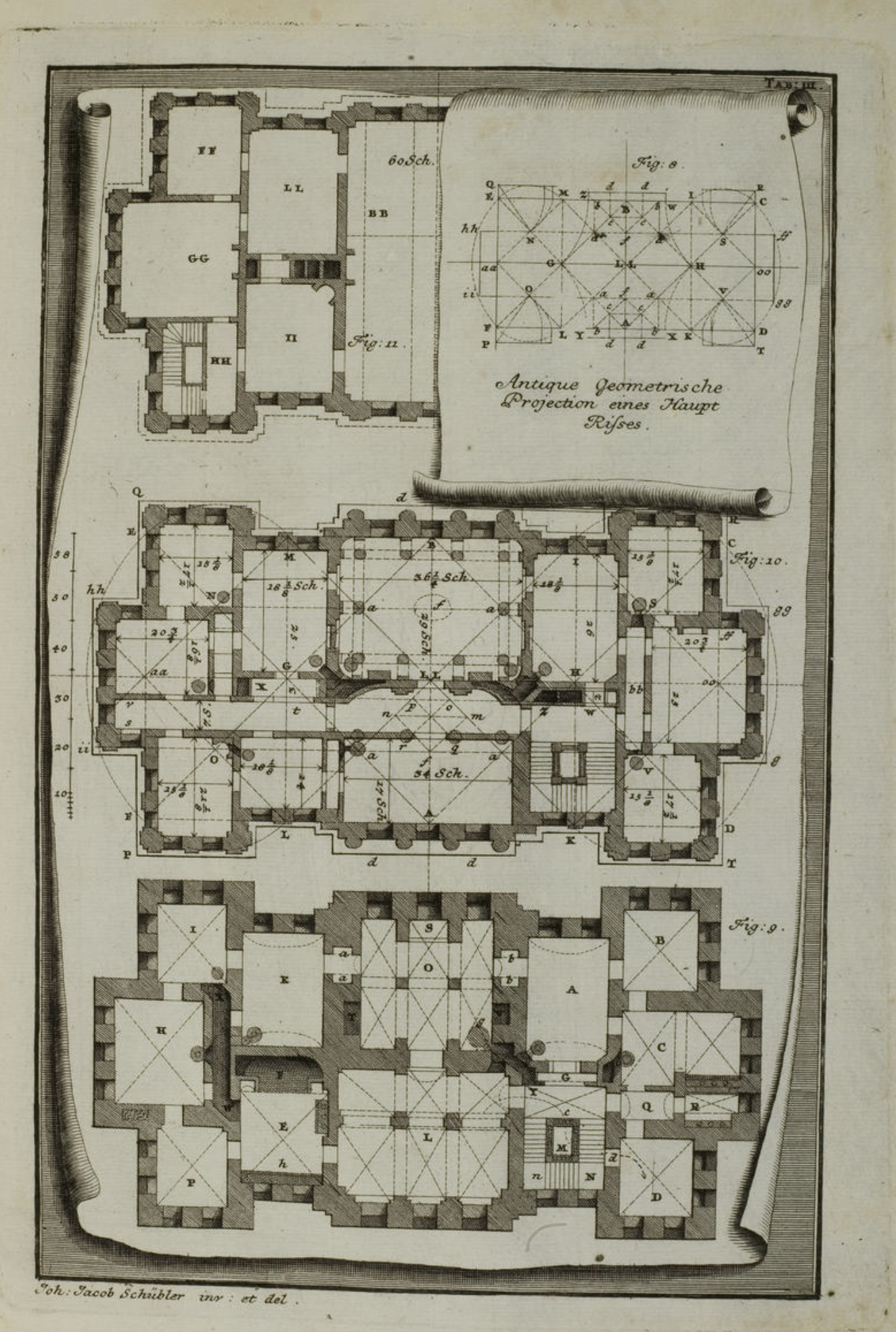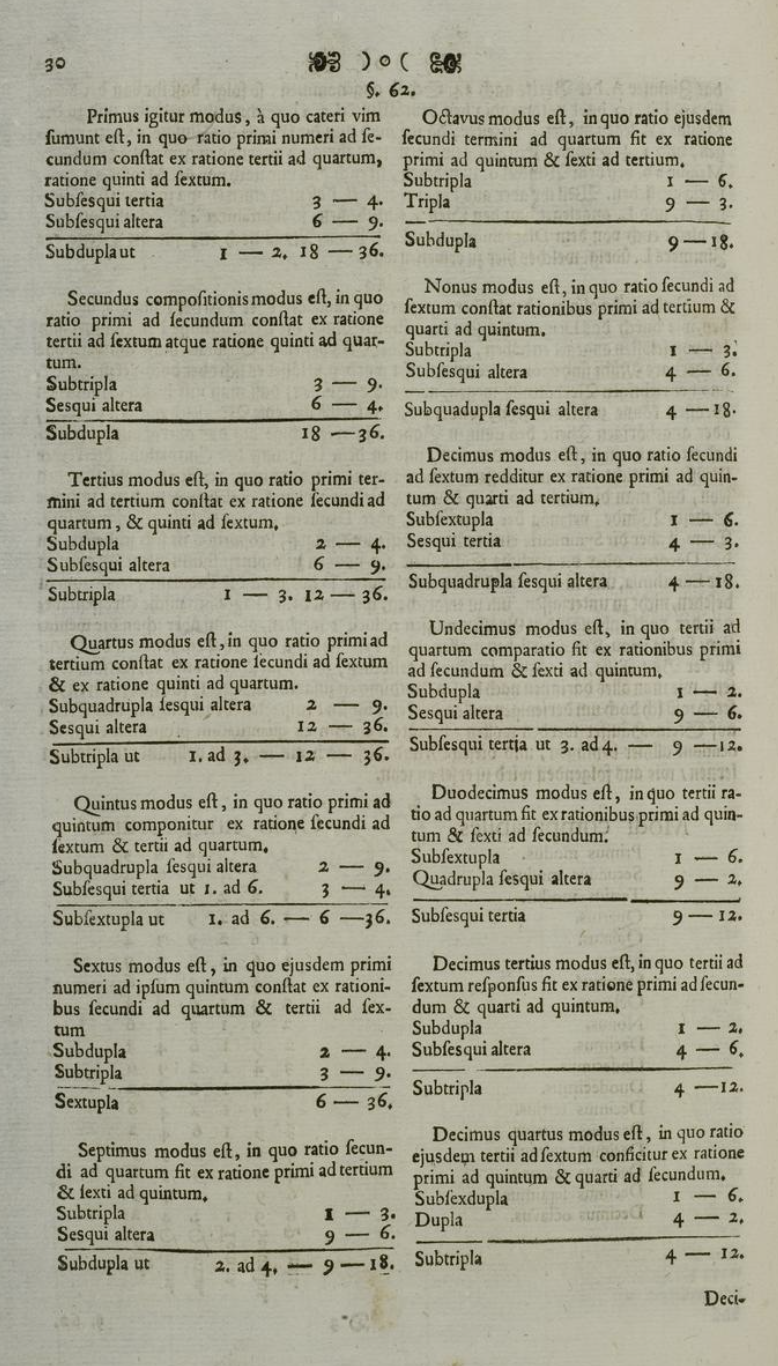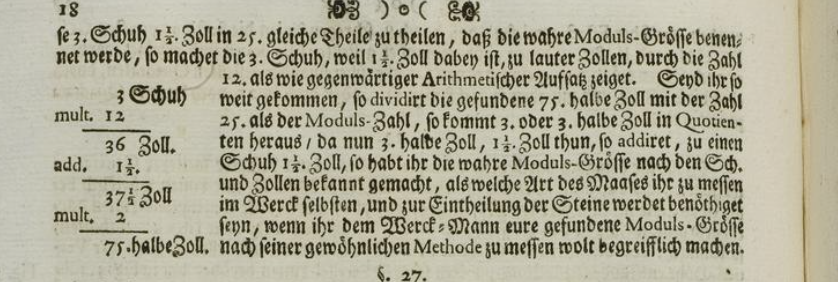Proportions
Key words : explanations, mathematical formulas, tables
Going through the first pages of the book Synopsis architecturae civilis eclecticae the concept of proportions is evident in the numbers, tables and mathematical formulas spread throughout the text. Flipping through the next pages of the book you can see that the numbers stay present throughout the book.
Looking at the book in more detail you can see that the Author deals with various ways of calculating and playing with the proportions of simple rooms in houses as well as roofs and other features. The author looks at various ways to dealing with proportions in different geometrys or styles.
Throughout the book there are many tables that help calculate proportions. Most tables wich are mentioned in the book are based on at least one of these tables. These tables are often referred to through out the chapters, most prominently at the beginning of each chapter. The usage of these tables is not only explained in form of a text, but is also evident in the examples in form of a floor plan or an other drawings.
Especially chapters I, II and III explain how to calculate proportions in general, how to calculate the different measurements of simple rooms and how to play with the different measurements.The next chapters are more specific and deal with more complicated geometry . Most chapters have the same structure. The explanation is in form of a Text and references the specific drawing and room it’s referring to. In the drawings its self the rooms are named with letters so the room or specific part of the drawing, so it’s clear which part of the drawing the author is referring too and the reader can visualise his examples. Looking at the side of the text you can see what figure or drawing is relevant in this particular chapter or paragraph.
The chapters throughout the book are divided in different paragraphs which are numbered and indicated with a paragraph symbol. Each paragraph gives instructions on how to calculate proportions with a specific method and describes this method and or its geometry. The examples are spread through out the text. This is visible in the indications of drawings or figures on the side of each paragraph. In most paragraphs the method on how to calculate proportions are explained with specific lengths. These can be found in the referenced drawings as well.
Some chapters come with a form of table or mathematical formula. In these paragraphs the mathematical formula is either the basis or the conclusion of the explanation. Almost all tables and mathematical formulas are found in the first four chapters. In the following chapters only few are mentioned.



